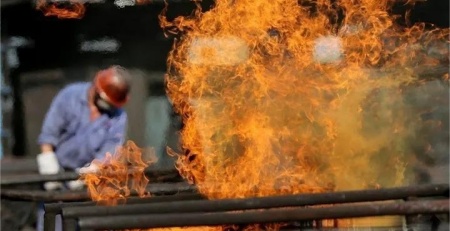【Anode Materials】 New Regulations: No More Pure Capacity Expansion!

【Anode Materials】 New Regulations: No More Pure Capacity Expansion!
Focus on Environmental Protection and Performance
On May 8th, the Ministry of Industry and Information Technology released the "Lithium Battery Industry Specification Conditions (2024 Edition)" (Draft for Comments) and the "Lithium Battery Industry Specification Announcement Management Measures (2024 Edition)" (Draft for Comments) (hereinafter referred to as the "Draft for Comments"). These drafts set forth new guidelines for industry capacity and technological innovation, clearly directing companies to reduce projects focused solely on capacity expansion and instead to strengthen technological innovation, improve product quality, and reduce production costs. Compared to the 2021 version of the specification conditions, performance indicators for various lithium battery products have been improved to varying degrees. Additionally, a new category of small power lithium batteries has been added to the power lithium battery category. The drafts further specify requirements for the production and operation, process level, and environmental protection of both cathode and anode materials.

Increased Requirements for Energy Density and Cycle Life
In the long run, the upstream and downstream industrial chain of new energy vehicles remains full of development opportunities. With the global expansion of the new energy vehicle market, the demand for power batteries will continue to grow. To meet this market demand, companies should prepare in terms of technological innovation, product quality, and capacity adjustment. Graphitized petroleum coke (GPC) is widely used in the lithium battery market.
Compared to the "Lithium-Ion Battery Industry Specification Conditions (2021 Edition)", the new draft for comments has raised the performance indicators for lithium battery products. For example, the minimum lower limit of energy density for consumer lithium batteries has been raised from 230Wh/kg to 260Wh/kg, and the lower limit of energy density for battery packs has been raised to 200Wh/kg. Both single cells and battery packs must have a cycle life of ≥800 cycles and a capacity retention rate of ≥80%.
A new category for small power lithium batteries has been added under power lithium batteries, with a single-cell energy density of ≥140Wh/kg and a battery pack energy density of ≥110Wh/kg. The cycle life for single cells is 1000 cycles with a capacity retention rate of ≥70%, and for battery packs, it is 800 cycles with a capacity retention rate of ≥70%.
For energy storage lithium batteries, the requirements are a single-cell energy density of ≥155Wh/kg and a battery pack energy density of ≥110Wh/kg. The cycle life for single cells is ≥6000 cycles with a capacity retention rate of ≥80%, and for battery packs, it is ≥5000 cycles with a capacity retention rate of ≥80%.
For cathode materials, the requirements are a specific capacity of ≥155mAh/g for lithium iron phosphate, ≥180mAh/g for ternary materials, ≥165mAh/g for lithium cobalt oxide, and ≥115mAh/g for lithium manganese oxide. Other cathode materials should refer to these performance indicators.
For anode materials, the requirements are a specific capacity of ≥340mAh/g for carbon (graphite), ≥280mAh/g for amorphous carbon, and ≥480mAh/g for silicon-carbon. Other anode materials should refer to these performance indicators.
Strengthened Safety and Environmental Protection Measures
The new version introduces additional regulations concerning safety production, environmental protection, and energy conservation and emission reduction. The 2024 draft for comments includes statements encouraging companies to create green factories to meet the current higher requirements for sustainable development and green manufacturing.
The comprehensive energy consumption per unit product for lithium battery production enterprises should be ≤400kgce/10,000Ah. For cathode material production enterprises, it should be ≤1400kgce/t, and for anode material production enterprises, it should be ≤3000kgce/t.
In the booming lithium battery industry, China's lithium battery shipment volume in 2023 reached 940GWh, accounting for nearly 75% of the global total, with anode materials accounting for 94%. However, the high energy consumption and pollution associated with manufacturing have caused significant environmental damage. The release of the draft for comments signals the end of the unregulated expansion era in the lithium battery industry.

Future Development of Anode Materials: Pollution-Free is the Basic Principle
For anode materials, artificial graphite has long dominated the market share. However, with the implementation of new lithium battery policies and dual carbon policies, artificial graphite anodes face a crisis due to their high energy consumption during the graphite production process, causing significant obstacles in project approval, construction, and exports. This has spurred the rapid development of environmentally friendly natural graphite anode materials. Today, modified natural graphite, with its cost, performance, and safety advantages, is starting to dominate the mainstream of anode materials.
In fact, natural graphite was not introduced later than artificial graphite in lithium battery anodes. Historically, the development opportunities for natural graphite anodes were missed due to outdated preparation technologies that could not overcome limitations in rate performance and cycle life. Nowadays, modified natural graphite has fully realized its potential, surpassing the performance of comparable artificial graphite anodes and solving critical issues in rate performance, cycle life, and high-temperature performance.
Overall, the 2024 draft for comments introduces more mandatory standards for the lithium battery industry chain. The draft also encourages companies to develop and implement product technical standards or specifications that exceed national or industry standards to adapt to industry development and policy changes. Huamingsheng Technology's modified natural graphite anode materials are leading the industry's technological advancements and are actively increasing R&D investment to prepare for the next generation of technologies. For more information and future data analysis on anode materials, welcome to contact us.
No related results found








0 Replies